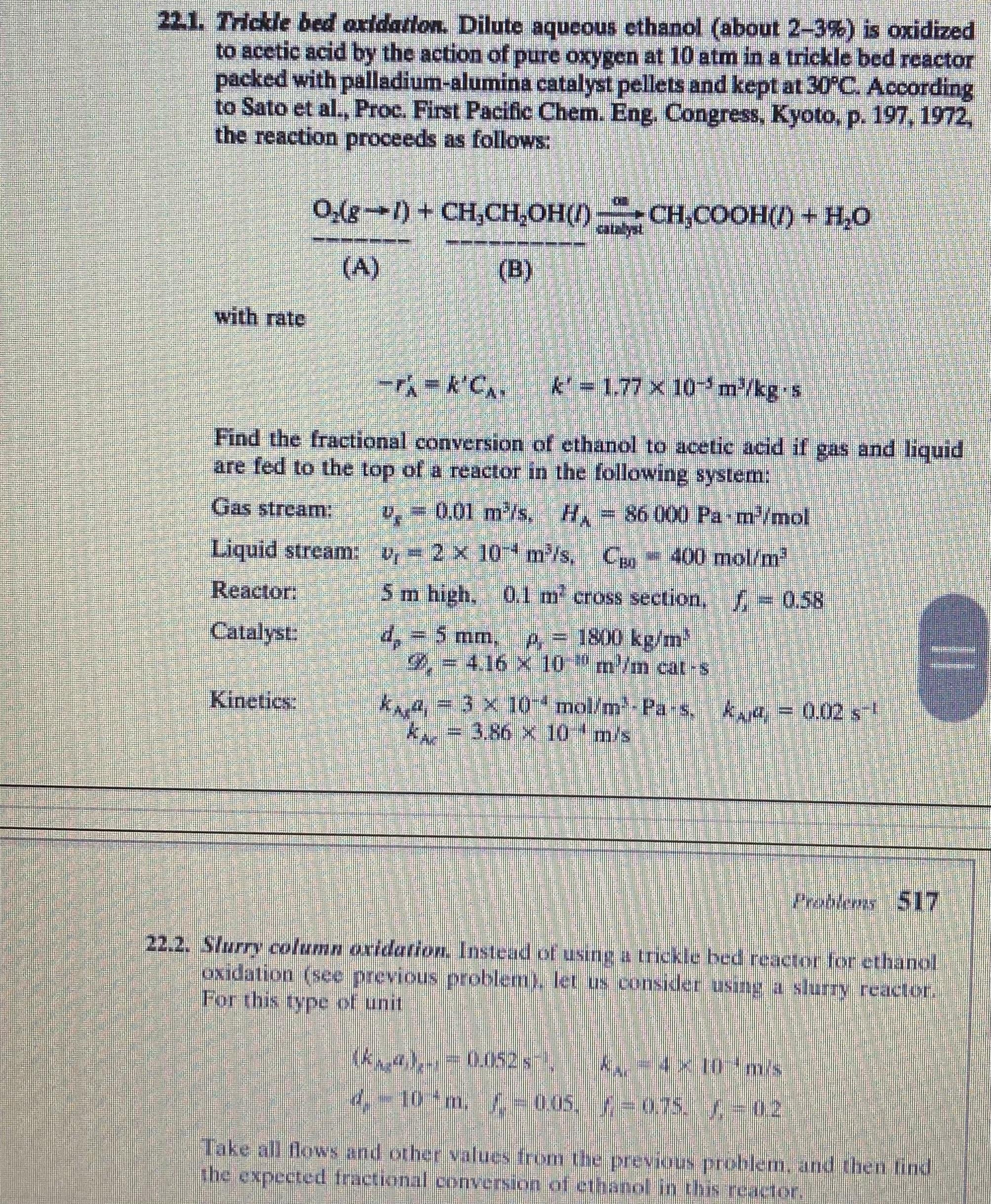Answered step by step
Verified Expert Solution
Question
1 Approved Answer
22.1. Trickle bed oxidation. Dilute aqueous ethanol (about 2-3%) is oxidized to acetic acid by the action of pure oxygen at 10 atm in

22.1. Trickle bed oxidation. Dilute aqueous ethanol (about 2-3%) is oxidized to acetic acid by the action of pure oxygen at 10 atm in a trickle bed reactor packed with palladium-alumina catalyst pellets and kept at 30C. According to Sato et al., Proc. First Pacific Chem. Eng. Congress, Kyoto, p. 197, 1972, the reaction proceeds as follows: O(g) + CH,CHOH(!) CH,COOH(/) + HO catalyst (A) (B) with rate -Ak'CA k' = 1.77 x 10 m/kg-s Find the fractional conversion of ethanol to acetic acid if gas and liquid are fed to the top of a reactor in the following system: Gas stream: v = 0.01 m/s, H, 86 000 Pa-m/mol v, x Liquid stream: v = 2 101 m/s, C 400 mol/m 5 m high. 0.1 m cross section. = 0.58 Reactor: f Catalyst: d. d = 5 mm, p = 1800 kg/m Kinetics: 2. = 4.16 10" m'/m cat-s k = 3 10 mol/m Pa-s, k = 0.02 s k = 3.86 x 10 m/s Problems 517 22.2. Slurry column oxidation. Instead of using a trickle bed reactor for ethanol oxidation (see previous problem), let us consider using a slurry reactor. For this type of unit (kg) 0.052 s A 410 m/s d, 10 m. f 0.05, -0.75 -0.2 Take all flows and other values from the previous problem, and then find the expected fractional conversion of ethanol in this reactor.
Step by Step Solution
There are 3 Steps involved in it
Step: 1

Get Instant Access to Expert-Tailored Solutions
See step-by-step solutions with expert insights and AI powered tools for academic success
Step: 2

Step: 3

Ace Your Homework with AI
Get the answers you need in no time with our AI-driven, step-by-step assistance
Get Started


